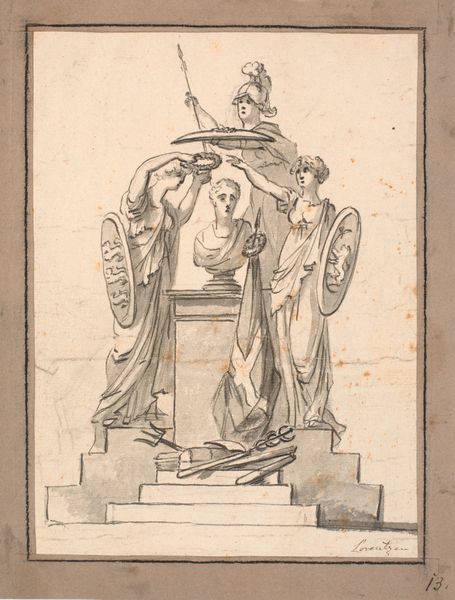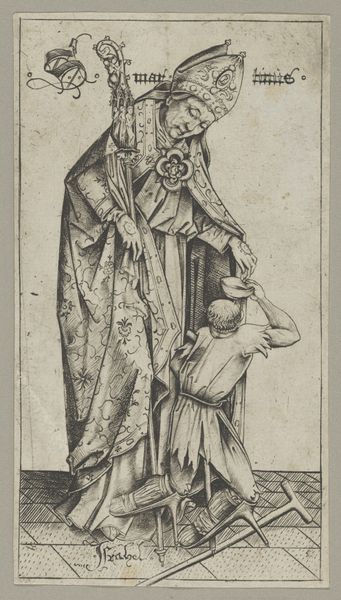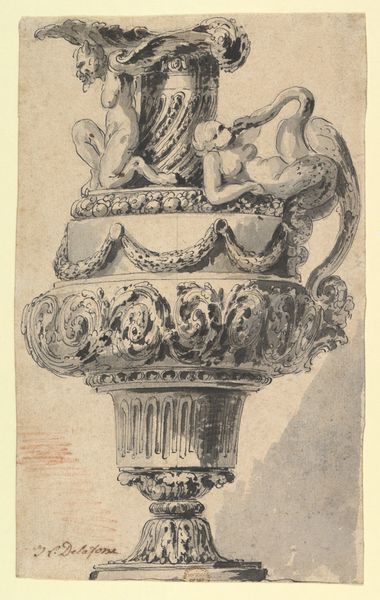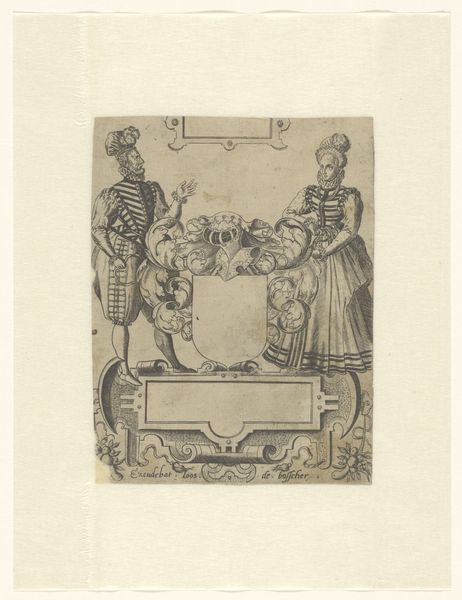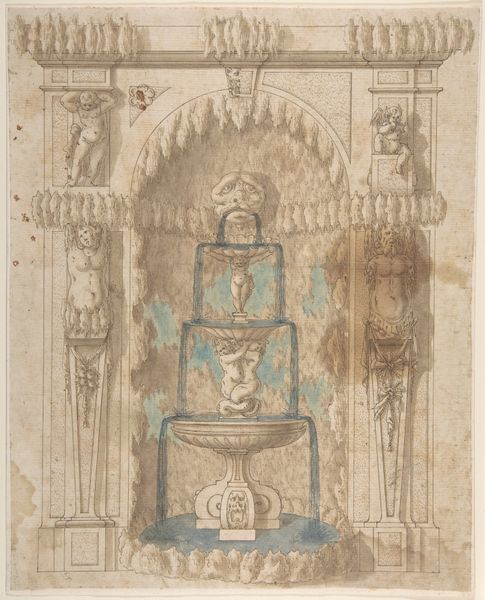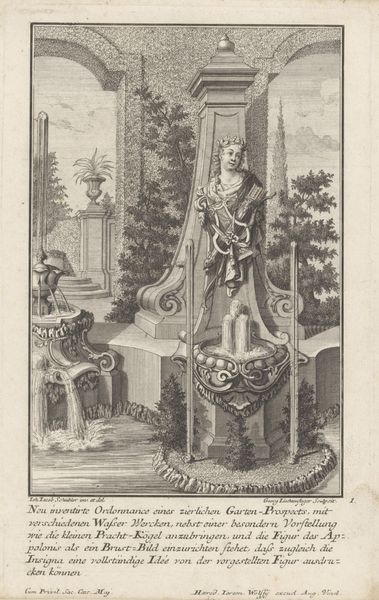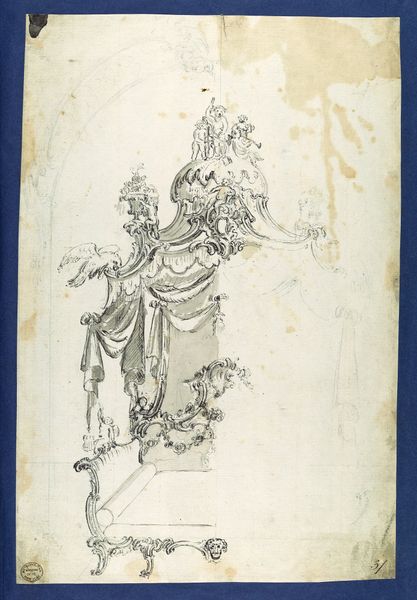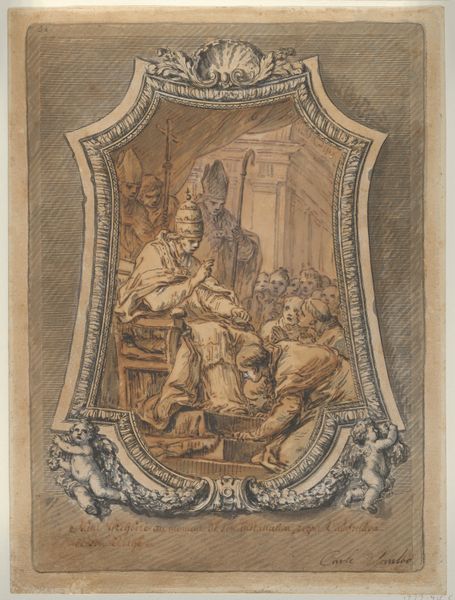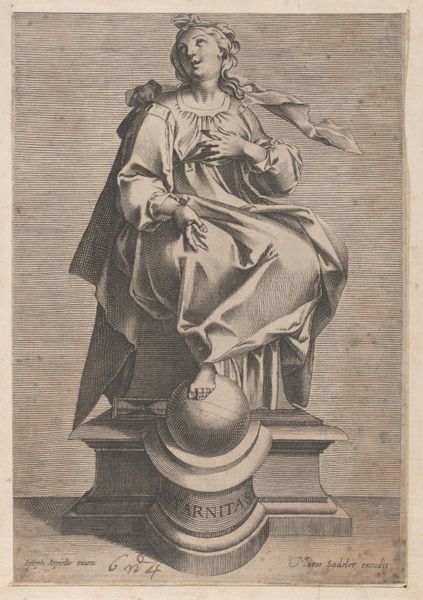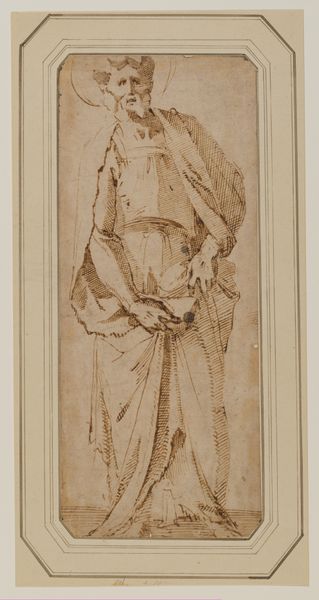
Wallpaper Panel depicting Winter with male herm 1803 - 1813
0:00
0:00
drawing, print, engraving
#
drawing
#
neoclacissism
# print
#
form
#
geometric
#
line
#
engraving
Dimensions: Sheet: 63 1/4 × 39 1/2 in. (160.7 × 100.3 cm)
Copyright: Public Domain
Editor: Here we have an engraving from Jacquemart et Bénard, created between 1803 and 1813, titled "Wallpaper Panel depicting Winter with male herm.” It's very architectural, and quite austere. What statements about art during that period do you think the artist tries to explore? Curator: This panel, intended for wallpaper, really speaks to the aspirations of the Neoclassical era. We see a clear interest in bringing supposedly high art themes – mythology, classical forms – into the domestic sphere. It becomes a form of cultural capital displayed within the home. Consider who might commission such a panel, and the statement they were hoping to make to their visitors. Editor: So it's about showing off a certain level of education or taste? Curator: Exactly! It suggests a specific social positioning, one connected to power, erudition, and an appreciation for what they perceived as the pinnacle of artistic achievement: classical antiquity. Note the deliberate references to winter – the bust possibly alludes to an ancient god connected with that time of the year – which further embellish the idea. Did it succeed at democratizing this high art or did it do the opposite? Editor: I hadn’t thought about the political aspect of something as simple as wallpaper. Fascinating! The wallpaper almost reinforces class divides under the guise of Neoclassicism.. Curator: Indeed, and it reflects how institutions, tastes, and class ambitions become intertwined with something as seemingly mundane as home decor. What started as revolutionary soon became yet another status symbol. Editor: Thanks for bringing the institutional context into it, that gives it a lot more weight!
Comments
No comments
Be the first to comment and join the conversation on the ultimate creative platform.

